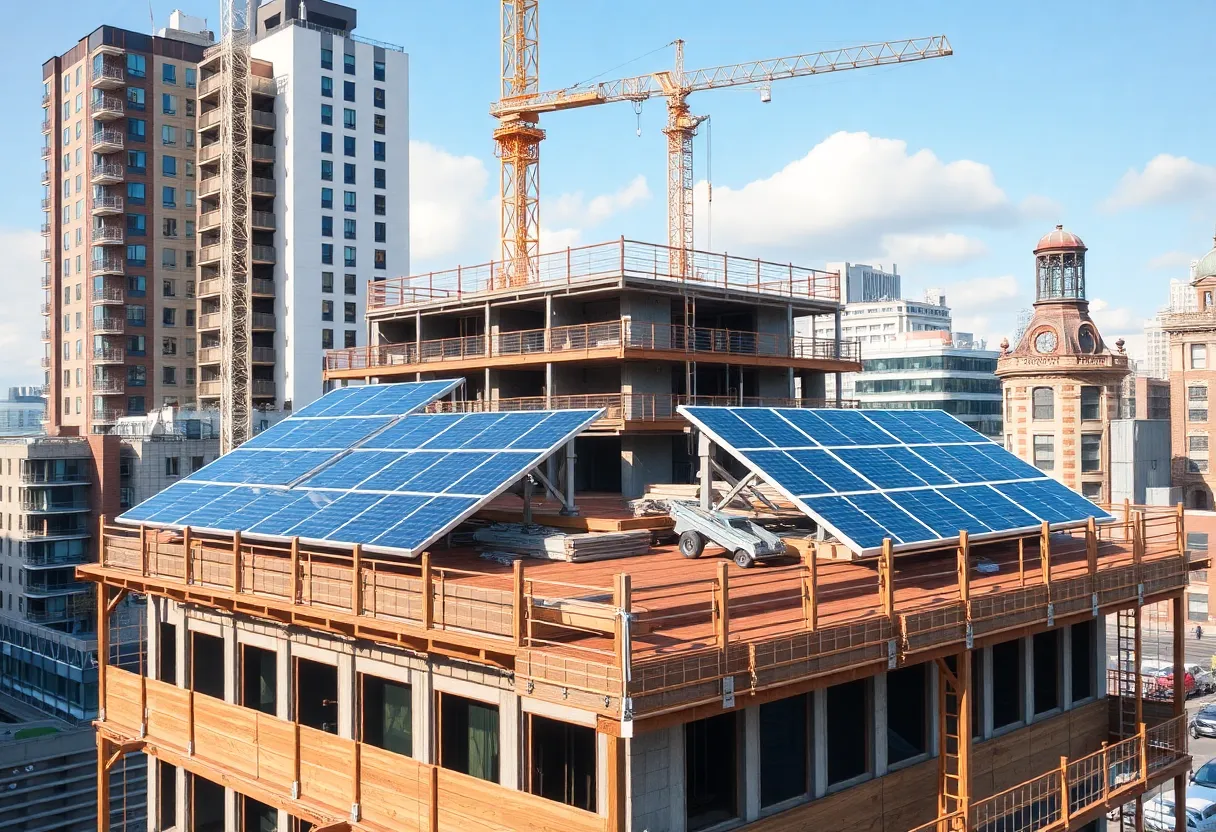News Summary
New York City’s construction sector is adapting to the Climate Mobilization Act that mandates sustainability, integrating solar energy into projects. With Local Laws 92 and 94 requiring solar panels on new builds and renovations, compliance with strict carbon emission limits is crucial. A new division, ‘Solar for Construction’, promotes early planning to avoid costly adjustments. As property values rise with solar installations, the industry is shifting towards energy-efficient building practices, making the future of construction in NYC increasingly sustainable.
New York City’s Construction Industry Embraces Solar Energy Integration Amid Stricter Environmental Regulations
The construction industry in New York City is undergoing a significant transformation due to the implementation of _sustainability mandates_ that promote solar energy integration. This shift is largely driven by the city’s Climate Mobilization Act, which lays down a framework for reducing greenhouse gas emissions across various sectors, particularly in construction.
New Regulations Shape Industry Practices
Local Laws 92 and 94 have been established to mandate _sustainable roofing systems_ for most new construction and renovation projects. These laws require the installation of solar panels on roofs, marking a major advance in the city’s commitment to _green infrastructure_. Furthermore, Local Law 97 places stricter limits on carbon emissions for large buildings, with compliance deadlines beginning in 2025. Buildings that exceed 25,000 square feet must submit annual reports detailing their greenhouse gas emissions to the NYC Department of Buildings starting May 1, 2025. Non-compliance could result in substantial financial penalties, underscoring the urgency for construction firms to adapt quickly to the new requirements.
Emerging Challenges and Opportunities
As of now, 11% of buildings in New York City are expected to exceed emissions limits set for the period between 2024 and 2029. With even stricter limits anticipated for 2030, approximately 63% of buildings will potentially fall short of compliance, creating a pressing challenge for building owners and developers. In response, there is a notable trend toward _integrating solar energy_ early in the construction process. This proactive approach not only helps in meeting city regulations but also bolsters the overall performance of solar energy systems.
Solar Energy as a Standard Component
Industry experts indicate that solar energy integration has become a _standard element_ in construction projects rather than a mere afterthought. This shift has been further facilitated by companies that specialize in solar installations, such as those that have launched dedicated divisions to focus on solar integration during the planning stages of projects. Early collaboration between designers and contractors is recognized as a critical factor in avoiding costly last-minute adjustments to electrical work, enhancing the efficiency of the project timelines.
Financial Benefits Drive Solar Adoption
The demand for solar energy solutions in New York City is fueled not only by regulatory requirements but also by a growing market interest in _energy-efficient buildings_. Solar power can significantly reduce energy costs, making construction projects more financially sustainable. Buildings outfitted with solar installations are seeing financial benefits as well; properties with solar systems are attracting higher rental prices and recorded a _5.4% increase in property value_ in homes with solar installations. This increase highlights the effective return on investment that solar energy can provide for property owners.
Conclusion: A Shift Towards Sustainability
As the construction industry in New York City adapts to these new environmental regulations, the integration of solar energy is aligning with broader goals of sustainability and energy efficiency. Local firms are recognizing the importance of embracing solar energy from the outset, ensuring compliance with new laws while also enhancing the overall value and sustainability of their projects. This transformation not only contributes to the city’s climate goals but also positions the construction sector as a key player in the _transition towards a more sustainable future_.
Deeper Dive: News & Info About This Topic
Additional Resources
- Brooklyn Eagle: Solar Integration in NYC Construction
- ENR: Fight to Racially Integrate the US Construction Industry
- Westfair Online: Filben Group and Assisted Living Development
- Construction Dive: Flatiron Dragados Merge
- GeoWeek News: EarthCam Integration with Autodesk
- Google Search: Solar Energy Integration in Construction
- Wikipedia: Solar Energy
- Google News: NYC Construction Solar Energy Regulations
- Encyclopedia Britannica: Energy Efficiency
- Google Scholar: New York Construction Industry Solar Energy
Author: Construction CA News
The CALIFORNIA STAFF WRITER represents the experienced team at constructioncanews.com, your go-to source for actionable local news and information in California and beyond. Specializing in "news you can use," we cover essential topics like product reviews for personal and business needs, local business directories, politics, real estate trends, neighborhood insights, and state news affecting the area—with deep expertise drawn from years of dedicated reporting and strong community input, including local press releases and business updates. We deliver top reporting on high-value events such as the Rose Parade, Coachella, Comic-Con, and the California State Fair. Our coverage extends to key organizations like the California Building Industry Association and Associated General Contractors of California, plus leading businesses in technology and entertainment that power the local economy such as Apple and Alphabet. As part of the broader network, including constructionnynews.com, constructiontxnews.com, and constructionflnews.com, we provide comprehensive, credible insights into the dynamic landscape across multiple states.




